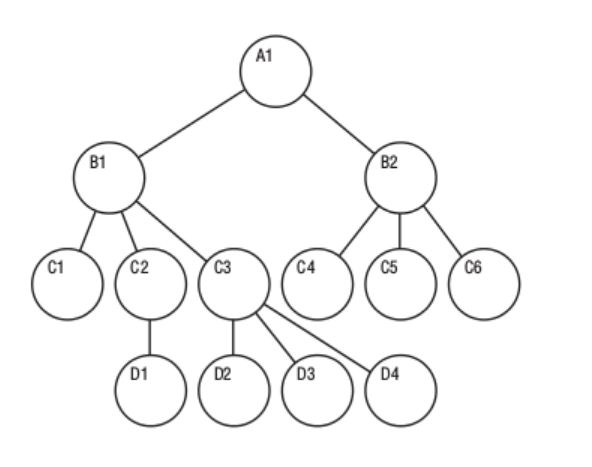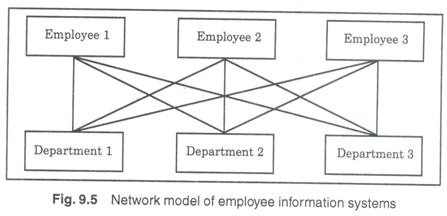[Notes] CSCI 585 DB Data modeling
14 Jan 2020 | CSCI585, English/英文, NoteCredit to: Prof. Saty Raghavachary, CSCI 585, Spring 2020
Outline
- Data modeling and importance
- Basic data-modeling building blocks
- Business rules and the influence towards database design
- Evolution of major data models
- Emerging alternative data models and the need they fulfill
- models classified by their level of abstraction
Standard Database Concepts
- Schema: Conceptual organization of the entire database as viewed by the database administrator
- Subschema: Portion of the database seen by the application programs that produce the desired information from the data within the database
- Data manipulation language (DML): Environment in which data can be managed and is used to work with the data in the database
- Schema data definition language (DDL):Enables the database administrator to define the schema components
- SQL does both of DML and DDL
Data Modeling and Data Models
- Data modeling: Iterative and progressive process of creating a specific data model for a determined problem domain.
- Data models: Simple representations of complex real-world data structures. Useful for supporting a specific problem domain
- Model: Abstraction of a real-world object or event
Importance of Data Models
- Are a communication tool
- Give an overall view of the database
- Organize data for various users
- Are an abstraction for the creation of good database
Data Model Basic Building Blocks
- Entity: Unique and distinct object used to collect and store data
- Attribute: Describes an association among entities
- Relationship: Describes an association among entities
- One-to-many (1:M)
- Many-to-Many (M:N or M:M)
- One-to-one (1:1)
- Constraint: Set of rules to ensure data integrity
Business Rules
- Brief, precise, and unambiguous description of a policy, procedure, or principle
- Enable defining the basic building blocks
- Describe main and distinguishing characteristics
Sources of Business Rules
- Company managers
- Policy makers
- Department managers
- Written documentation
- Direct interviews with end users
Reasons for Identifying and Documenting Business Rules
- Help standardize company’s view of data
- Communications tool between users and sesigners
- Allow designer to:
- Understand the nature, role, scope of data, and business processes
- Develop appropriate relationship participation rules and constraints
- Create an accurate data model
Translating Business Rules into Data Model Components
- Nouns translate into entities
- Verbs translate into relationship among entities
- Relationship are bidirectional
- Questions to identity the relationship type
- How many instances of B are related to one instance of A?
- How many instances of A are related to one instance of B?
Naming Conventions
- Entity names - Required to:
- Be descriptive of the objects in the business environment
- Use terminology that is familiar to the users
- Attribute name - Required to be descriptive of the data represented by the attribute
- Proper naminh:
- Facilitates communication between parties
- Promotes self-documentation
Evolution of major models
Hierarchical modeling
At first, data was stored in individual files (transitioned from paper).
The next improvement was a ‘hierarchical DB model’, where data was structured in the form of a tree [similar to a modern filesystem]. Data, in the form of nodes, are linked in a tree-like fashion. To traverse the tree, we need to know the underlying format (‘class hierarchy, to make an analogy with classes and objects), and the actual path [eg. to relate A1 and D2, we need to traverse A1->B1->C3>D2]. (Notice, add or delete node may break the link, i.e., structure dependent)
 Hierarchies are good for ‘1:M’ [tree], but not ‘M:N’ [graph or multiple inheritance].
Hierarchies are good for ‘1:M’ [tree], but not ‘M:N’ [graph or multiple inheritance].
- Manage large amounts of data for complex manufacturing projects
- Represented by a upside-down tree which contains segments
- Segments: Equivalent of a file system’s record type
- Depicts a set of one-to-many (1:M) relationships
Advantages
- Promotes data sharing
- Parent/child relationship promptes conceptual simplicity and data integrity
- Database security is provided and enforced by DBMS
- Efficient with 1:M relationship
Disadvantages
- Requires knowledge of physical data storage characteristics
- Navigational system requires knowledge of hierarchical path
- Changes in structure require changes in all application programs
- Implementation limitations
- No data definition
- Lack of standards
Network modeling
A network model is better than a hierarchical one, because it can capture M:N [in addition to the above, another example is ‘products and orders’]. (structure dependence)

- Represent complex data relationships
- Improve database performance and impose a database standard
- Depicts both one-to-many (1:M) and Many-to-many (M:N) relationship
Advantage
- Conceptual simplicity
- Handles more relationship types
- Data access is flexible
- Data owner/member relationship promotes data integrity
- Conformance to standards
- Includes data definition language (DDL) and data manipulation language (DML)
Disadvantage
- System complexity limits efficiency
- Navigational system yields complex implementation, application development, and management
- Structural changes require changes in all application programs
The Relational Model
- Produced an automatic transmission database that replaced standard transmission databases
- Based on a relation
- Relation or table: Matrix composed of intersecting tuple and attribute
- Tuple : Rows
- Attribute: Columns
- Relation or table: Matrix composed of intersecting tuple and attribute
- Describes a precise set of data manipulation constructs
Advantages
- Structural independence is promoted using independent tables
- Tabular view improves conceptual simplicity
- Ad hoc query capability is based on SQL
- Isolates the end user from physical-level details
- Improves implementation and management simplicity
Disadvantages
Requires substantial hardware and system software overheadConceptual simplicity gives untrained people the tools to use a good system poorlyMay promote information problems
Relational Database Management System(RDBMS)
- Performs basic functions provided by the hierarchical and network DBMS systems
- Makes the relational data model easier to understand and implement
- Hides the complexities of the relational model from the user
SQL-Based Relational Database Application
- End-user interface
- Allows end user to interact with the data
- Collection of tables stored in the database
- Each table is independent from another
- Rows in different tables are related based on common values in common attributes
- SQL engine
- Executes all queries
The Entity Relationship Model (E-R)
- Graphical representation of entities and their relationships in a database structure
- Entity relationship diagram (ERD)
- Uses graphic representations to model database components
- Entity instance or entity occurrence
- Rows in the relational table
- Connectivity: Term used to label the relationship types
Advantages
- Visual modeling yields conceptual simplicity
- Visual representation makes it an effective communication tool
- Is integrated with the dominant relational model
Disadvantages Limited constraint representationLimited relationship representationNo data manipulation languageLoss of information content occurs when attributes are removed from entities to avoid crowded displays

More notations: Additional reading: here is information on, and comparison between, four ER notations: Chen, Crow, Rein85, IDEFIX.
O-O databases
Also called ‘object stores’, these dbs offer(ed) a way to store (“persist”) objects on disk. The objects (entity instances) are instanced from classes (entities), like with standard OO programming practice.
Advantages:
- ‘cleaner’ design - objects mimic real-world counterparts
- inheritance and encapsulation possible
- richer datatypes (attributes) available
- good for CAD, multimedia..
Drawbacks:
- harder to query (compared to relational DBs) - no straightforward way to build and traverse relations between objects
- relations are simpler in certain situations
The RDBMS community collectively ignored this development..
O-R databases
These are a compromise between RDBs and OODBs - they feature an O-O front-end over a relational architecture. Interfacing applications do so in an O-O way, and queries/modifications are translated to/from relational form (“ORM”).
Benefits:
- easy to access the data from an O-O application
- queries can be simpler (can use objects’ structure)
Drawback:
- performance can be poor on account of the two-way translation
 Data models have evolved - from ‘hierarchical’ (very rigid) to ‘NoSQL’ (VERY flexible).
Data models have evolved - from ‘hierarchical’ (very rigid) to ‘NoSQL’ (VERY flexible).
Models classified by their level of abstraction
Layered data abstraction

The External Model
An external model is a collection of ‘fragmented’, ‘from the stakeholders’ POV’, modeling of a database.
- End users’ view of the data environment
- ER diagrams are used to represent the external views
- External schema: Specific representation of an external view

The Conceptual Model
- Represents a global view of the entire database by the entire organization
- Conceptual schema: Basis for the identification and high-level description of the main data objects
- Has a macro-level view of data environment
- Is software and hardware independent
- Logical design: Task of creating a conceptual data model

The Internal Model
An internal model specifies what type of modeling (eg. relational, NoSQL…) to use for storing the data.
- Representing database as seen by the DBMS mapping conceptual model to the DBMS
- Internal schema: Specific representation of an internal model
- Uses the database constructs supported by the chosen database
- Is software dependent and hardware independent
- Logical independence: Changing internal model without affecting the conceptual model

The Physical Model
The physical model specifies actual data storage specifics (file format, APIs…).
- Operates at lowest level of abstraction
- Describes the way data are saved on storage media such as disks or tapes
- Requires the definition of physical storage and data access methods
- Relational model aimed at logical level
- Does not require physical-level details
- Physical independence: Changes in physical model do not affect internal model
